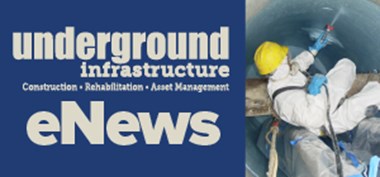Water Research Foundation Releases New Report on Lead Service Line Lining and Coating Technologies

The Water Research Foundation has released a new research report on lead service line lining and coating technologies that says certain lining and coating technologies can effectively reduce or eliminate the release of lead from lead service lines.
The report, Evaluation of Lead Service Line Lining and Coating Technologies, helps water utilities, engineering consultants, consumers, property owners, state and provincial regulators, and other stakeholders make informed decisions regarding lining and coating of both lead and copper service lines.
“This research shows that lining and coating technologies have the potential to be an important tool in the toolbox for utilities to employ to reduce and prevent lead release,” said Rob Renner, CEO of the Water Research Foundation.
The following aspects of linings and coatings were investigated:
- Effectiveness in preventing lead release from LSLs and reducing tap-water lead levels
- Advantages and disadvantages for full versus partial LSL replacement
- Commercial availability, suitability for use in small-diameter pipes, and utilization of materials certified for use in contact with potable water
- Potential, upon installation and after aging, to leach organic and inorganic chemicals of concern with respect to water quality
- Long-term effectiveness and durability
- Ability to control internal water-service-line corrosion, prevent metal release from both service lines and the scales inside them, and repair service-line leaks
- Costs to both utilities and property owners, especially relative to the cost of LSL replacement
- Engineering feasibility, commercial availability, certification, and property access issues
The report found that three currently available lining or coating technologies, PET lining, epoxy coating, and polyurea/polyurethane coating, can effectively reduce or eliminate release of lead from LSLs, are expected to have a long service life, and can potentially result in significant cost savings and other benefits relative to LSL replacement, depending on site-specific conditions. Other possible benefits include fewer and shorter disruptions of vehicular and pedestrian traffic, reduced damage to landscaping, trees, sidewalks, and driveways, less potential for damage to other utility lines (gas, electric, phone, cable, sewers), and facilitating delay of LSL replacements until they can be more efficiently and more cost-effectively performed in concert with future main rehabilitation or replacement projects.
The report was jointly funded by the Water Research Foundation and the U.S. Environmental Protection Agency under Cooperative Agreement No. EPA-STAR-RD-83486501.
Related News
From Archive

- Glenfarne Alaska LNG targets late-2026 construction start for 807-mile pipeline project
- U.S. water reuse boom to fuel $47 billion in infrastructure spending through 2035
- $2.3 billion approved to construct 236-mile Texas-to-Gulf gas pipeline
- Major water pipe break in Puerto Rico hits over 165,000 customers
- Potomac River Tunnel project enters construction phase beneath Washington, D.C.
- Pennsylvania American Water launches interactive map to identify, replace lead water service lines
- Trump's tariffs drive $33 million cost increase for Cincinnati sewer project
- Utah city launches historic $70 million tunnel project using box jacking under active rail line
- Tulsa residents warned after sewer lines damaged by boring work
- Fatal trench collapse halts sewer construction in Massachusetts; two workers hospitalized



Comments